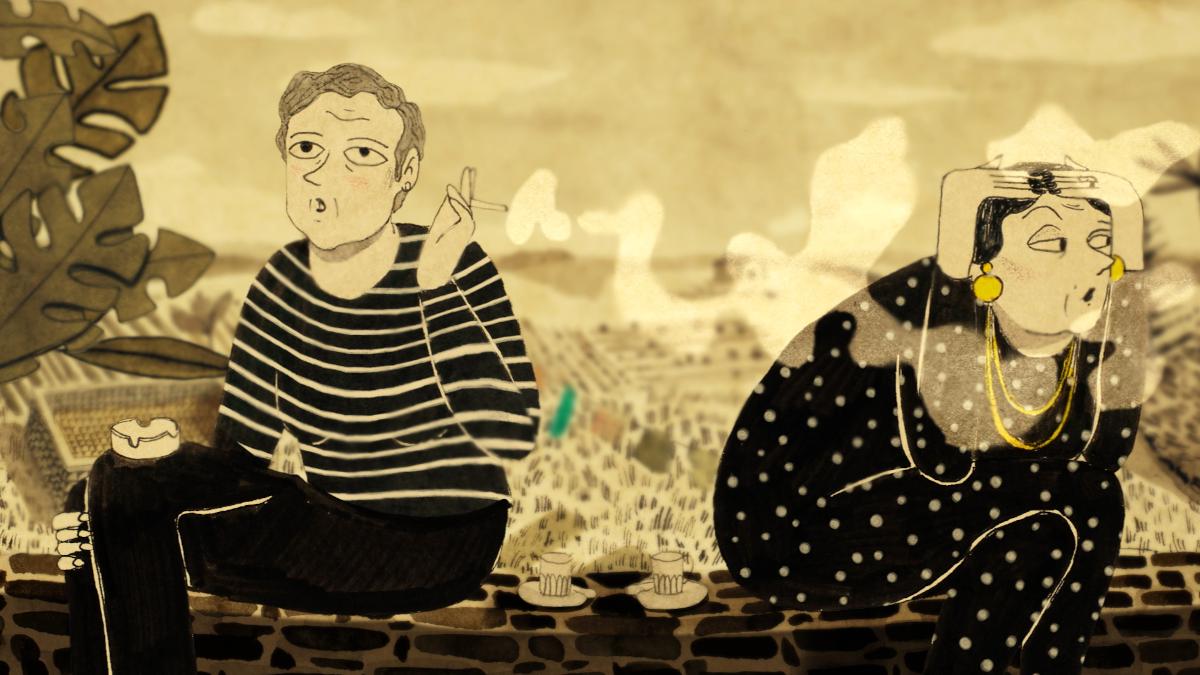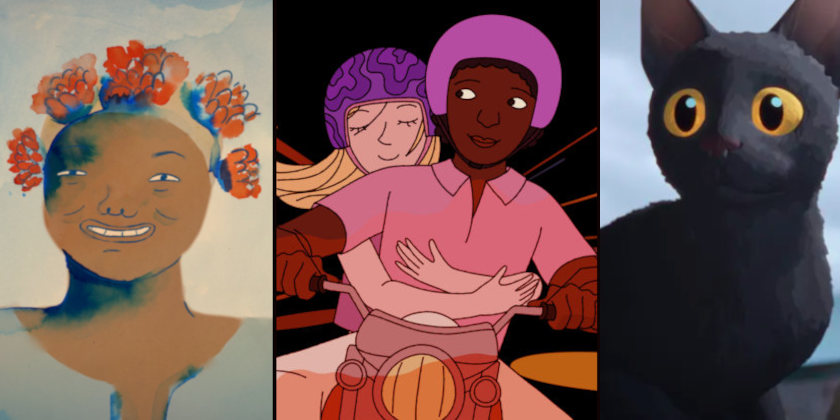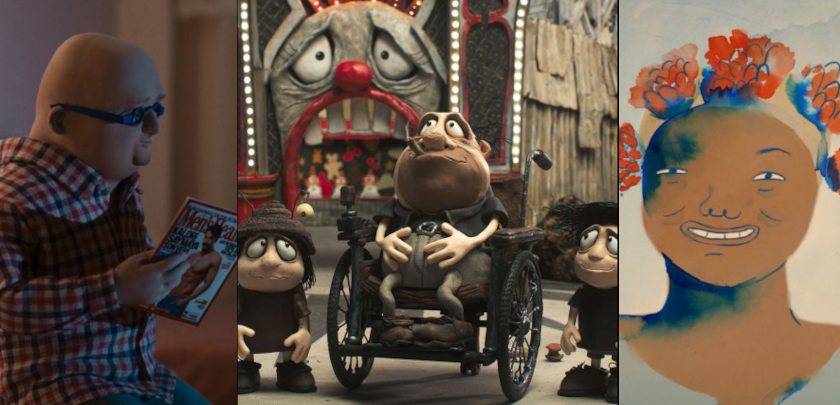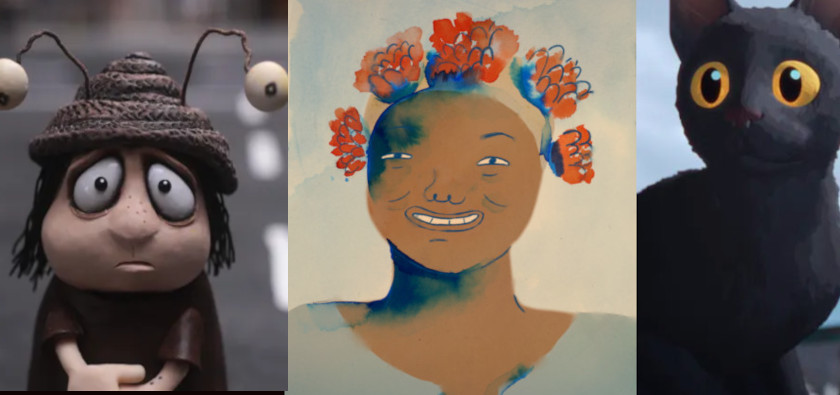Adaptation Is the Goal: Interview with Alexandra Ramires
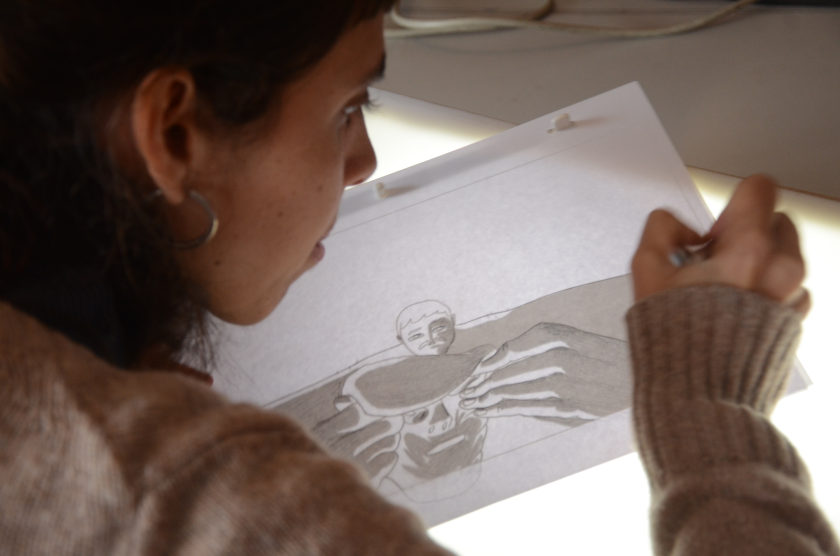
Alexandra Ramires is the award-winning director of Tie (Elo) an animation short, which received the award from the National Animation Prize (PNA, Portugal) 2020, was one of the Oscar-shortlisted films, just was nominated to the Animation Sophia Prize by the Cinema Academy of Portugal (2021), and also is one of the three finalists in two categories in Quirino Awards 2021.
ZF - I heard you drew inspiration from a book in which the characters had small heads that so? How much more did you get ideas for the film? There are usually several small ideas in the creator's mind, which brings everything together, and creates a story of its own.
AR - Absolutely, one of my inspirations was the book. I remember that was the first one and helped me to describe the characters, which are the most obvious in the film. However, I had in mind other elements, for example, I started to get a master's degree that I never finished, in which in practice was archeology. I still had some classes, and I was fascinated by the fact that one could build things from scratch. So, the idea of making a film was in which there were no elements already made, but everything that existed would have to be manufactured on the spot from the nature - Herzog's film, Cave of Forgotten Dreams (2010) shows a flute made with a bone. It is the idea of us adapting to the environment. If we look at our history, there was no industry, and we did everything with what nature offered us. And it made sense for me that it could be in the animation short. I also remember when I started doing it, the female character had a ladder to climb the tree. And then I thought that doesn't make any sense, because the film is about adaptation, that the two characters adapt, they have to adapt to what exists without any other help.
Therefore, that was one of the things that I had as a basis. And there was the idea of cooperation yet. That is a bit of my view of the world, even before this film. The previous film was a co-direction, so I and Laura Gonçalves (the other director) worked together creatively to achieve that film - Drop by Drop (Água Mole, 2017).
That is the context of working as an animation team. We were working as a team, and we were committed to the idea of collective. Therefore, the main idea was cooperation and how we adapt to each other - the most technical group with the most creative one, and even inside the creative group, we were several creative people. I was working there for the first time, in such an intensive way ... in the animation studio of Bando a Parte, we are a group of people who work in animation and that always fascinated me because we were people who fit in some way.
We believe in the collective, in the idea of building things together.

So, I thought about the cooperation, adaptation, companionship that are many of the layers of the film. All of these are reflections of what I was experiencing at that time. Perhaps because of that, it awoke the image of two characters that fit together, to find a way to create things and a melody. Even with few tools. That takes a little bit of background to come up with the film. And I think we ended up finding it in personal and professional relationships, in love, in friendship, in the way we relate to the world, well that is my point of view. So, I feel that I transported that to the film. That was an inspiration or a reference, was my frame.
ZF - Your film is very symbolic because it starts with a death. It begins with a death and ends with the opposite, with a transformation. The film talks about a metamorphosis process, the dog's body, and the path of the two characters who end up dealing with themselves.
AR - Yes. Since death was what gave rise to many other reasons for all that happened make sense, right? The idea of death being as a beginning. Something that drives other things can turn out to be good, regardless of how we look at death as a terrible thing. However, it can also grow things that are very important, fertile, and good for us. I think there are always beautiful aspects in dark sides . So, it was a path for the characters. From the dog's bone, they could make music and fit all that, and it is the whole narrative arc. It starts with death and ends with a harmonious melody between two characters that adapt to each other.
ZF - In this context, I'm still curious who has the big head in this relationship, the female figure? Despite the common saying (especially in our Latin culture) that "the man is the head of the house" in the film, the head is hers. Do you think that things can be like that in real life as well?
AR - Yes, I can think that the head is the one who leads, and the body is the one who follows... but I think you can think of it in different ways. You know, it is funny because this was my first idea, and without thinking about it too much. The best way was for her to be the head because the characters are like that (the book's characters were small-headed). I just completed it with one more character that gave the proportion to the final couple.
I even thought about the characters like the same genre to nobody thinks that was a gender hierarchy. It does not make sense to be saying that there is a higher gender. I am more interested in fostering a coexistence of genres in which they complement each other, but there is a metaphor anyway. And someone can always consider that who is in the head is the one who leads. However, one does not live without the other, isn't it?
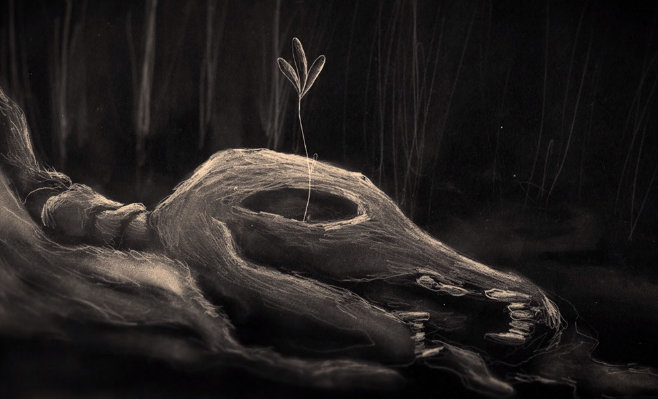
I think a woman has a masculine side, and a man has a feminine side. And for me, it is fundamental to have an acceptance of that, without refusing that. So, it was the first idea, and it came more naturally that is a more inclusive way. That represents more my opinion of the world: a harmonious gender coexistence and not a gender hierarchy.
Of course, at this moment, women need a hierarchy to reach a balance. And I understand the idea of interpreting it as self-affirmation. In that sense, I thought that, regardless of what people might think, that was my first idea, and it represents the feeling I wanted for the film.
ZF - Regarding the film aesthetic (the film was nominated in this category at the Quirino Awards), the visuals remind me of engraving. I found this interesting, since your training has been in painting.
AR - However, at that time, I worked more in engraving, more with line than with colors ...
ZF - That's my next question, it concerns the use of colors: in your case case, I see the lack of them in the film, which occurs even at the turning point of the narrative.
AR - Yes, but there are rose dashes, which have a reason for being. They appear only when the face is not wearing the mask. The man's face has no color, but his body has. The woman's body has no rose, but her face does. It shows that there is a part live, and another is just a mask - for the attentive looking. I do want to work with color, but my language is more through drawing, engraving, black and white, Indian ink.

However, also related to the engraving technique: I had used engraving in Drop by Drop. The scenarios, the 40 seconds of the film that take place underwater, are printed prints frame by frame. I have a stronger connection to the engraving, of which I can't hide. It is curious because if we think about other types of engraving ...
ZF - I affirm that I "can see" the fine line of the etching.
AR - Ah, that was what I wanted to do, and if you tell me that, I am very happy! For the etching in Drop by Drop, we are thinking about the dry tip that does not work with acids - just the line: a thin line, and then there is a very velvety line ... and the "velvety" one that I think adds that charisma to the engraving in a dry point.
Then there is the inkup process. And when we go to put the ink, there are some mists around the lines. And this is what makes me find the dry point quite interesting, but this is a hard process where I was working with Laura. I thought to repeat it, but I also wanted to focus on drawing looser and more immediate. That would not have been possible if you were to use the engraving.
However, I did not abandon this aesthetic. An example, when we use woodcut, we draw the light, not the shadow. I wanted to play with this: to draw the light to find the shadow. So, if I worked for it, I have to scratch a lot, and I wanted to make this inversion. I wanted to see this as the technical exercise of the film. Mainly because when I started experimenting with making these drawings, it reminded me of the old films. These productions show some vibrations, as when one photographs a hair in the drawings. And so, some stains resulting from the graphite powder remind me of the photographs of the old films. Perhaps, it all ended up giving some realism to the film - which is even weird - but more than the animation itself, I think it helps to feel awkward, which I also wanted for the film.
ZF - So how did you execute this technically? Was it a "digital engraving" or on paper?
AR - It's all paper, pencil, and graphite powder only. For example, whether I have to draw the teeth, which are white, or that part of the eyes, I need to paint the other way around: drawing everything on the white part and nothing on the black part. After that, the drawing was scanned, and inverted, creating a negative of the original.

Now, when it comes to graphite powder, I used it to create shadows and textures. So, imagine a figure in that I have a white forehead "here". In this case, I smeared my fingers with graphite powder and then smeared them on the paper on that area. Next step, the drawing is inverted, and the stain becomes an illuminated part instead of a shadow one.
ZF.: Your explanation is interesting because that clarified to me (and ZF's readers) what you had done.
AR - I can even tell you that in the Drop by Drop the characters are digitally painted. The scenarios and the sequence that pass underwater are made in the engraving only. In Tie, I did the opposite. In the Drop by Drop, we (Laura and me) animated everything on paper and digitally paint the characters. In this turn: I animated digitally then, print all the frames, and after, I did the final art drawing of the film over these prints. In other words, Drop by Drop was animation on paper and digital painting; but Tie was the other way around.
ZF.: Another thing that made me curious was the choice of the English title “Tie" (The Portuguese title is “ELO”). It has a somewhat different meaning, and it is close to “link”. Why you use "Tie" that means something like "stuck", "tied", instead of a word "in connection" with something?
AR - I think the translation was not the happiest because of that. The idea of a tie (garment) is already a common interpretation (that is strong), and it is not the same it is not the ideal meaning. Actually, I was looking for a three-letter word related to link. That should represent the three characters: the dog, the man, and the woman. And "he" + "she" (ele + ela in Portuguese) results in "Elo”, it worked very well in Portuguese, but in English ... it does not work the same way (laughs).
Another reason that I avoided the term “Link”, was that a movie called "link" came out, and it was a short one too - very beautiful. It showed two of the characters linked by the hair. So, I preferred to use another word. Thinking about it now, it would have to be a type of film without translation, using the original title, regardless of the language.
I'm now making a book with the person who wrote the script for Tie with me, Regina Guimarães. She wrote many texts during the production, which I think are super cute, but they couldn't be stay in the film because the film has no dialogue. I also made the drawings for the storyboard with Indian ink - which I liked very much, but they are not in the film either. So, we joined the two works, and we are making a bi-lingual book (Portuguese-English). The Portuguese title is still “Elo”, but in English, it is “A Song of Flesh and Bone”, which is something that ends up working for English, rather than “tie”.
ZF - Amazing! in fact, when we are to transcribe something into another language, we do not make a “translation” , but a version. An exact transcription is impossible, due to differences in our alphabet, language and socio-cultural context. It is always necessary to "adapt", the motto of Tie; to try and lose as little as possible of the original text meaning.
AR.: Even for the phonetic similarities from one word in a language to another one. Although you will not be able to find the same word in another language.
ZF - Τhank you very much for your generosity, Alexandra, in sharing with ZF readers your experience from making the Tie. And congratulations on the nomination for the Quirino Awards.
AR - You're welcome! I am grateful to know that you loved the film.
contributed by: Eliane Gordeeff
Quirino Awards takes place 27-29 May 2021 in La Laguna, Tenerife (Spain)




